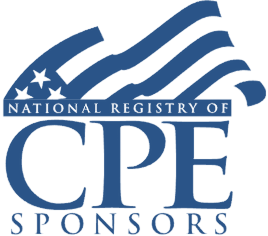Welcome! Save 30% on all CLE, CPE, and Professional Skills webinars, plus 15% off any annual pass with code HOLIDAY25
About the Course
Introduction
This webinar will discuss how a spousal lifetime access trust (SLAT) can provide needed flexibility in estate planning. Our panel of transfer tax veterans will discuss the primary benefits and risks couples assume when establishing a SLAT and satisfying the annual reporting requirements for trust and estate professionals working with clients who have or may benefit from creating a SLAT.
Description
For 2023 the unified estate and gift tax exemption has been indexed to $12.92 million. However, this all-time high exemption is scheduled to sunset in 2025 and return to $5 million in 2026. This amount will also be indexed for inflation. A SLAT can help combat the constant flux of estate tax guidelines.
Gifting assets to a trust can remove the asset, and any future appreciation, from the grantor's estate and take advantage of the current estate tax exemption. A SLAT is an irrevocable trust created by a grantor spouse for the benefit of the other spouse. It provides lifetime distributions for HEMS (health, education, maintenance, and support) for the beneficiary spouse with a remainder interest usually passing to children or grandchildren. When appropriately structured, the distributions from the SLAT can benefit the grantor spouse by contributing half the payment of certain ordinary bills.
The caveats of these trusts are many. Often reciprocal trusts are formed, and if not appropriately structured, these mirror trusts could be included in both spouses' estates and subjected to creditor claims. Trust and estate advisers must recognize the merits and caveats of this flexible planning vehicle.
Listen as our panel of trust and estate professionals explains the nuances of SLATs.
Presented By

Mr. Edmondson practices in partnership, corporate, and individual tax planning; business transactions including mergers and acquisitions; business planning; tax controversy; estate and wealth transfer planning; probate; estate and trust litigation; asset protection; and charitable planning. He has conducted, authored, and directed numerous seminars for professional, academic, and civic groups on taxation, business, asset protection and estate planning. Mr. Edmondson works closely with clients to develop and implement such strategies.

Ms. Rounds partners closely with bankers and other relevant teams to build wealth planning business, serving UHNW clients and business owners worldwide through income tax and estate planning, cross-border issues, business succession, risk management, philanthropy, insurance planning, asset allocation and diversification, family dynamics and governance issues. Ms. Rounds was elected to the NAEPC Estate Planning Hall of Fame in November of 2022.
-
BARBRI is a NASBA CPE sponsor and this 110-minute webinar is accredited for 2.0 CPE credits.
-
BARBRI is an IRS-approved continuing education provider offering certified courses for Enrolled Agents (EA) and Tax Return Preparers (RTRP).
Date + Time
- event
Wednesday, April 26, 2023
- schedule
1:00 p.m. ET./10:00 a.m. PT
- Spousal lifetime access trusts: introduction
- Benefits and considerations
- Current state of estate tax
- Grantor
- Beneficiaries
- Trustee
- Distributions
- Other
- Caveats
- Reciprocal trusts
- Divorce and death
- Other
- State considerations
- Reporting requirements
The panel will cover these and other essential issues:
- Choice of jurisdiction
- Critical considerations for reciprocal trusts
- Allowed distributions to the beneficiary spouse from the SLAT
- Annual tax consequences to the grantor spouse establishing the trust
- How to meet annual trust IRS reporting requirements for SLATs
Learning Objectives
After completing this course, you will be able to:
- Identify clients who will benefit from a SLAT
- Determine the annual reporting requirements for SLATs
- Decide how divorce can impact a SLAT
- Ascertain whether reciprocal trusts are needed
- Field of Study: Taxes
- Level of Knowledge: Intermediate
- Advance Preparation: None
- Teaching Method: Seminar/Lecture
- Delivery Method: Group-Internet (via computer)
- Attendance Monitoring Method: Attendance is monitored electronically via a participant's PIN and through a series of attendance verification prompts displayed throughout the program
- Prerequisite: Three years+ business or public firm experience preparing complex tax forms and schedules, supervising other preparers or accountants. Specific knowledge and understanding of estate, gift and trust taxation including various trusts types, the unified credit, and portability.

BARBRI, Inc. is registered with the National Association of State Boards of Accountancy (NASBA) as a sponsor of continuing professional education on the National Registry of CPE Sponsors. State boards of Accountancy have final authority on the acceptance of individual courses for CPE Credits. Complaints regarding registered sponsons may be submitted to NASBA through its website: www.nasbaregistry.org.

BARBRI is an IRS-approved continuing education provider offering certified courses for Enrolled Agents (EA) and Tax Return Preparers (RTRP).

BARBRI CE webinars-powered by Barbri-are backed by our 100% unconditional money-back guarantee: If you are not satisfied with any of our products, simply let us know and get a full refund. Contact us at 1-800-926-7926 .
Unlimited access to premium CLE courses:
- Annual access
- Available live and on-demand
- Best for attorneys and legal professionals
Unlimited access to premium CPE courses.:
- Annual access
- Available live and on-demand
- Best for CPAs and tax professionals
Unlimited access to premium CLE, CPE, Professional Skills and Practice-Ready courses.:
- Annual access
- Available live and on-demand
- Best for legal, accounting, and tax professionals
Unlimited access to Professional Skills and Practice-Ready courses:
- Annual access
- Available on-demand
- Best for new attorneys
Related Courses

Reconstructing Returns for Non-Filers
Wednesday, January 28, 2026
1:00 p.m. ET./10:00 a.m. PT

Inadvertent S Corporation Status Terminations: Revocations, Remedies, and Recent Cases
Tuesday, January 20, 2026
1:00 p.m. ET./10:00 a.m. PT
Recommended Resources

How CPE Can Bridge the Gap Between What You Know and What You Need to Know
- Career Advancement


